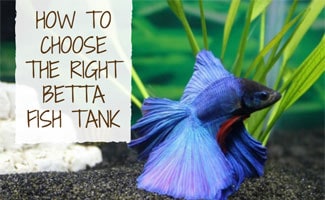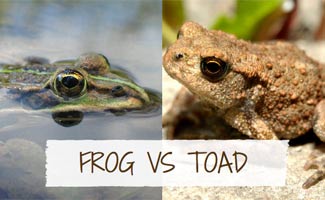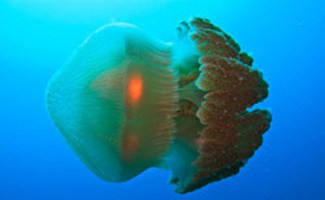Crab Lover’s Guide to Types of Crabs
 Most individuals are familiar with the common varieties of crab sold in seafood stores, blue crab, king crab, etc. However, many more specimens of crabs to be found within the infraorder Brachyura that are much lesser known. There are over five thousand sea crab species alone but we’ll take a look at some of the most popular kinds and learn more about each.
Most individuals are familiar with the common varieties of crab sold in seafood stores, blue crab, king crab, etc. However, many more specimens of crabs to be found within the infraorder Brachyura that are much lesser known. There are over five thousand sea crab species alone but we’ll take a look at some of the most popular kinds and learn more about each.
Types of Crabs
There are four sections of crabs found within the infraorder Brachyura: Dromiacea, Raninoida, Cyclodrorippoida and Eubrachyura.
Dromiacea
There are two hundred and forty living species and three hundred extinct species in the dromiacea group of crabs. The oldest known fossil from this group of crabs is from the Jurassic period.
Raninoida
There is one single superfamily within the Raninoida section of crabs, the Raninoidea. There is only one living family within the Raninoidea superfamily: Raninidae. Within the superfamily Raninoida there are forty-six living species and around two hundred extinct species. Crabs in this section are unique in appearance in that they have an abdomen that is not folded underneath the thorax.
Cyclodrorippoida
The group Cyclodorippoida is made up of one single superfamily: Cyclodorippoidea. The superfamily Cyclodorippoidea has three families: Cyclodorippidae, Cymonomidae and Phyllotymolinidae.
Eubrachyura
The Eubrachyura group of crabs is divided in to two subsections: Heterotremata and Thoracotremata. Crabs in this group are more advanced than other crab species. The two subsections of Eubrachyura are determined by the position of the genital openings on the crabs. The oldest specimens of the Eubrachyura group date back to the middle Jurassic period.
Distinguishing True Crabs
Not all crab species are considered to be “true crabs.” True crabs are crabs that are decapod crustaceans. Decapod crustaceans are ten footed crustaceans and all true crabs fall in to this category as well as the infraorder Brachyura. Characteristics of true crabs include a short tail in addition to an abdomen that is hidden underneath the thorax. True crabs have been around since the Jurassic period and vary in size from just a couple of millimeters to thirteen feet wide.
Some Popular Crab Varieties
The Coconut Crab
The coconut crab is a terrestrial type of hermit crab that has a number of aliases including: the palm thief, the robber crab and Birgus latro. This crab is a member of the superfamily Paguroidea, the family Coenobitidae and the genus Birgus. This incredible crab is well-known for being the largest land living arthropod in the world measuring as much as 16 inches long and weighing 9 lbs. The long legs of these giant crabs can measure as wide as 3 feet in total span! Incredibly, these crabs do not reach their maximum size until they are around 40 to 60 years old. The coconut crab is so named because of its love of coconuts which they can climb trees to fall. This large species does not only feed on coconuts (in fact it seldom feeds on them at all), it also feeds on fruit, seeds, other nuts and surprisingly carrion. This crab does not favor a carnivorous diet but it will take advantage of the availability of meat. Despite the fact that the coconut crab is a variety of hermit crab, it does not carry a shell when fully grown. Another unusual fact about this crab species is that it cannot survive in water for an extended period and will drown. The coconut crab is commonly found in the Indian Ocean and Pacific Ocean territories in areas where coconut palms are found. The only known threats to these giant crabs are humans or other coconut crabs.
Check out this video of this giant coconut crab:
The Hermit Crab
Hermit crabs are most commonly recognized as small crabs purchased as pets for young children. Hermit crabs belong to the superfamily Paguroidea and there are approximately 1,100 species in total. The hermit crab is divided in to seven different families: Coenobitidae, Diogenidae, Paguridae, Parapaguridae, Parapylochelidae, Pylochelidae and Pylojacquesidae. All species of hermit crab utilize empty gastropod shells to hide their soft abdomen, as the crab grows it transitions to a larger shell. Without the use of gastropod shells, the long spiral shaped abdomens of these crabs is open to attack by predators. These shells not only act to protect the soft abdomen of these creatures but it also serves to give the crab somewhere to hide if a predator manages to corner it. Shells are so important to the survival of these crabs that they will kill other hermit crabs in order to steal a shell that they like more than their own. Some hermit crabs resort to allowing sea anemones to grow on their shell, this scares away predators as well as competition for the shell itself. When found in the wild these crabs are social animals and live in large colonies, this is perhaps because it provides more opportunity for shell theft. The size and life span of the hermit crab varies considerably depending upon the species of the crab, some species live just a few months while others can live as long as thirty years. The earliest known hermit crab fossils are from the late cretaceous period.
The Horseshoe Crab
Horseshoe crabs are primarily sea dwelling crabs that only come ashore in order to mate. These large flat crabs prefer to live on the sandy muddy ocean bottoms and are often referred to as living fossils. While horseshoe crabs are similar to crustaceans they are actually more closely related to scorpions and spiders. This crab is a member of the order Xiphosurida rather than the order Decapoda. There are currently four species of horseshoe crab: Carcinoscorpius rotundicauda, Limulus polyphemus, Tachypleus gigas and Tachypleus tridentatus. These species are found in Southeast Asia, along the northwest Atlantic coast and in the Gulf of Mexico, in south and Southeast Asia and along the East Asian coast respectively. These large crabs are recognized for their large hard shell that protects the whole body and an underbelly that resembles an insect rather than a crab. The horseshoe crab has five pairs of legs and a long rigid tail that is used to help turn the crab over if it becomes flipped upside down. The female of this species is larger than the male and the male clings to the back of the female during mating. This large crab breathes through book gills which are located behind their legs. Unusually, the blood of this crab species is blue; this is due to the presence of copper in hemocyanin, a substance which carries oxygen in the crab’s blood. Hemocyanin replaces the hemoglobin that is found in other mammal blood. The horseshoe crab feeds underwater on small fish, worms and mollusks. The oldest known fossil from a horseshoe crab is around four hundred and fifty years old. Current populations of these crabs are dwindling due to their use as bait for eel fishing as well as destruction of their natural habitat along Japanese shorelines.
The King Crab
King crabs are also recognized as stone crabs and prefer to live in cold water. The king crab belongs to the infraorder Anomura, the superfamily Lithodoidea and the family Lithodidae. Most people know this crab superfamily because they have eaten its meat. The meat of the king crab is plentiful and has an appealing taste which makes them a widely caught and sold species. There are 121 species of king crab that are distributed throughout ten genera. The ten known genera of king crab include: Cryptolithodes, Glyptolithodes, Lithodes, Lopholithodes, Neolithodes, Paralithodes, Paralomis, Phyllolithodes, Rhinolithodes and Sculptolithodes. One of the most commonly known species is the red king crab, this is the single most harvested of all king crab species in the world. The appearance, size and location of the king crab vary depending upon the specific species being studied. These crabs almost always feature spines on their shells which vary in size, shape and number with different species.
The Japanese Spider Crab
The Japanese Spider Crab lives off the coast of Japan and is known for being the longest legged arthropod living today. This crab is a member of the superfamily Majoidea in the family Inachidae and the genus Macrocheira. The leg span of this incredible crab species can top out at twelve feet long and it can weigh as much as forty one pounds! The average size of the Japanese spider crab body is sixteen inches wide and the average leg span is around three and a half feet. These crabs have eight legs along with two feeding arms which are longer in males than in females. Despite looking particularly aggressive, these crabs are noted for being particularly gentle. These large crab species can live in waters of varying depths ranging from 160 feet to 2,000 feet deep. The Japanese spider crab feeds on shellfish as well as carcasses of recently deceased creatures. These giant creatures can often survive for as long as one hundred years. While these extremely large creatures may sound like a bountiful resource of food, they are no longer commonly eaten as a result of preservation efforts. As populations of these giant crabs have begun to fall, conservationists have ensured that the number of these crabs collected for food has been reduced. This incredible crab species is believed to be the oldest crab species to ever exist in addition to being the deepest ocean dwelling crab.
The Blue Crab
The blue crab is also known as the Chesapeake or Atlantic blue crab or by the scientific name Callinectes sapidus. This crab is a member of the family Portunidae and the genus Callinectes. While some areas find the blue crab to be a great food source, others find it too difficult to remove the small amount of meat that there is from the crab. This small crab is brilliant blue in color and measures around nine inches wide. The blue color of this crab species stems from a pigment found in the shell – alpha-crustacyanin that interacts with red pigment to give the crab its brilliant color. As these small crabs are cooked however, this compound breaks down and the crab turns red in color. This brightly colored crab has been observed in various areas of the world’s oceans but primarily it is found in the West Atlantic Ocean as well as in the Gulf of Mexico. Natural food sources for these crabs include small fish, carrion, smaller blue crabs, bivalves and human waste. Natural predators of this crab include sharks, humans, sting rays, eels, striped bass and trout. This small crab species plays a significant role in the economics of Maryland and Virginia since it is one of the most important exports for these states. Over time overfishing has resulted in a sharp decline in blue crab populations and as a result conservation plans have been set in motion.
Snow Crabs
Snow crabs are also known as queen crabs, spider crabs, opilio crabs and Chionecetes – the genus name for these species. Snow crabs are commonly fished as a food source and snow crab legs are widely sold. This crab belongs in the infraorder Brachyura, the family Oregoniidae and the genus Chionoecetes. There are seven species of Chionecetes: Chionoecetes angulatus or the triangle tanner crab, Chionoecetes bairdi or the tanner crab or bairdi, Chionoecetes elongates, Chionoecetes japonicas or the beni-zuwai crab, Chionoecetes opilio or the snow crab or opilio crab, Chionoecetes pacificus and Chionoecetes tanneri or the grooved tanner crab. The size and weight of these crabs depend upon the species of snow crab. These crab species can be found in the northern Pacific and the Atlantic Ocean. One of the more recognized species of snow crab is the opilio due to its exposure through the television series The Deadliest Catch. When cooked the snow crab takes on a bright orange color while their color before cooking is much more subdued.
Dungeness crab
The Dungeness crab is also known as the Metacarcinus magister. The Dungeness crab is a member of the infraorder Brachyura, the family Candridae and the genus Metacarcinus. This crab species tends to grow to around eight inches wide and is named after the port of Dungeness located in Washington. This crab species is found as far north as Alaska’s Aleutian Islands and as far south as Point Conception in California. The Dungeness crab has five pairs of legs, or four pairs of legs and its feeding claws. Most commonly this crab feeds on small fish and crustaceans but it will also scavenge anything it can find on the ocean bottom. This crab species is the most important crab type to the economy of the Pacific Northwest. Like a number of different crab species, the Dungeness crab molts its shell as it grows larger. If threatened by predators, this crab will bury itself in sand on the ocean bottom. This crab has more recently made news when it was located in the Atlantic Ocean outside of its natural range. Activists are concerned about the apparent spread of this species in terms of the effect it will have on local marine life in the Atlantic.
The Rock Crab
The rock crab is also known as Cancer irroratus, the Atlantic rock crab and the peekytoe crab and it has a red-orange appearance with darker coloring on top of its shell. This crab species measures around five inches wide when fully grown and is commonly found in tide pools and other rocky marine environments. The shell of the rock crab has small brown – purple spots on it which help to distinguish it from other similar looking crab species. These crabs are slow-moving and are scavengers by nature feeding on crabs, mussels, worms, clams and other invertebrates. These crabs are commonly hunted by humans, larger crabs, some fish species and seagulls. The range of this crab runs from Labrador to South Carolina and can be found at ocean depths of 2,600 feet.
Fiddler Crabs
Fiddler crabs are also known as calling crabs and are members of the infraorder Brachyura, the family Ocypodidae and the genus Uca. There are around one hundred different species of fiddler crabs found within nine subgenera all of which are very small and none of which are wider than two inches. The subgenera of the Uca genus include: Australuca, Austruca, Cranuca, Gelasimus, Leptuca, Minuca, Paraleptuca, Tubuca and Uca. Most commonly these single large clawed crabs are found along the tide at beaches or in mud flats. As with other crabs, fiddlers molt as they grow and after molting their soft shells will begin to harden. Hardening of the shell takes time which leaves the fiddler vulnerable to predators and extremely reclusive during molting. These crabs have a characteristic call that looks as though they are waving as they raise their large claw above their head to signal. If the large claw of the fiddler crab is lost at some point during its life, a new claw will generate after molting. In some cases where a fiddler loses its large claw, the regenerated claw may appear on the opposite side to the original and the original claw will be replaced with a small claw. The small fiddler crab is not a long-lived species and generally lives to only two years old. Like hermit crabs, fiddler crabs can be kept as pets but they must never be kept in fresh water alone as they require salt or brackish water to thrive.
Why is Variety in Crab Species Important?
Just like any other creature, crabs have a lot of diversity from species to species. These differences are important not only to the ecosystem in which these crabs thrive, but they are also important in our understanding of evolution. Knowing the various branches of the subphylum Crustacea and being able to follow them down to the different species of crab help to identify evolutionary adaptations specific to locales and environmental stimuli. There is no telling the damage that could be done to the delicate marine ecosystem if just one of the modern-day crab species to be decimated completely.
What do you think about crabs now that you know more about these creatures?



